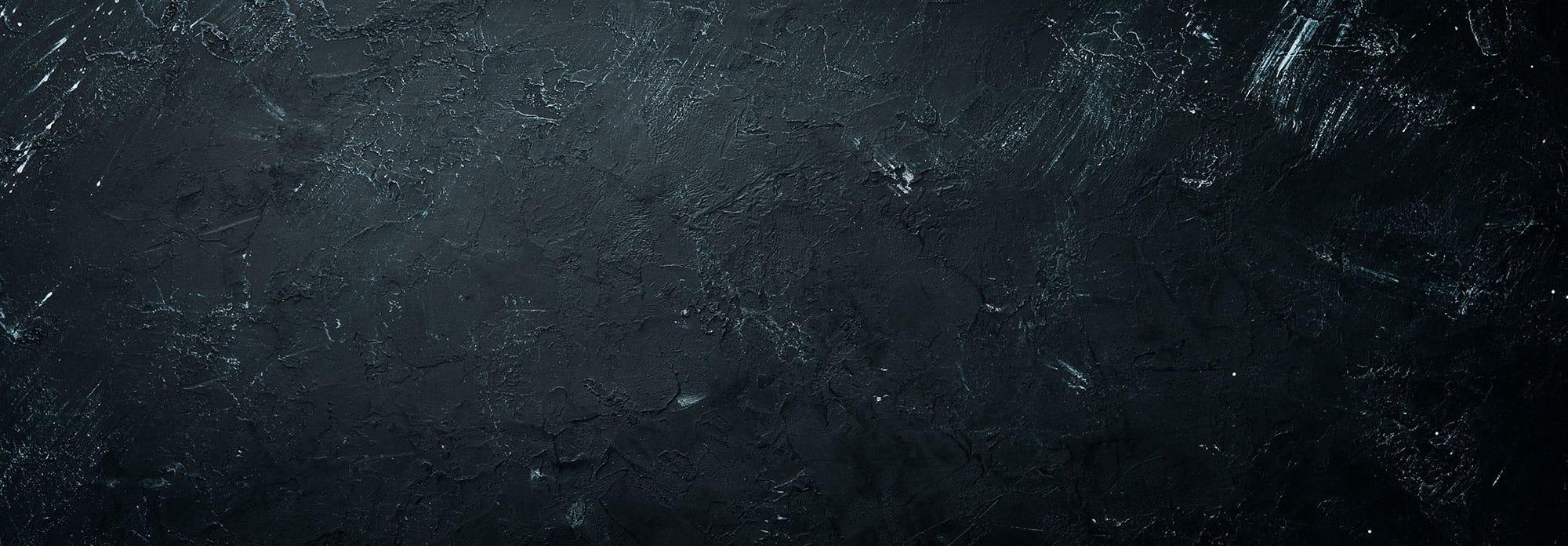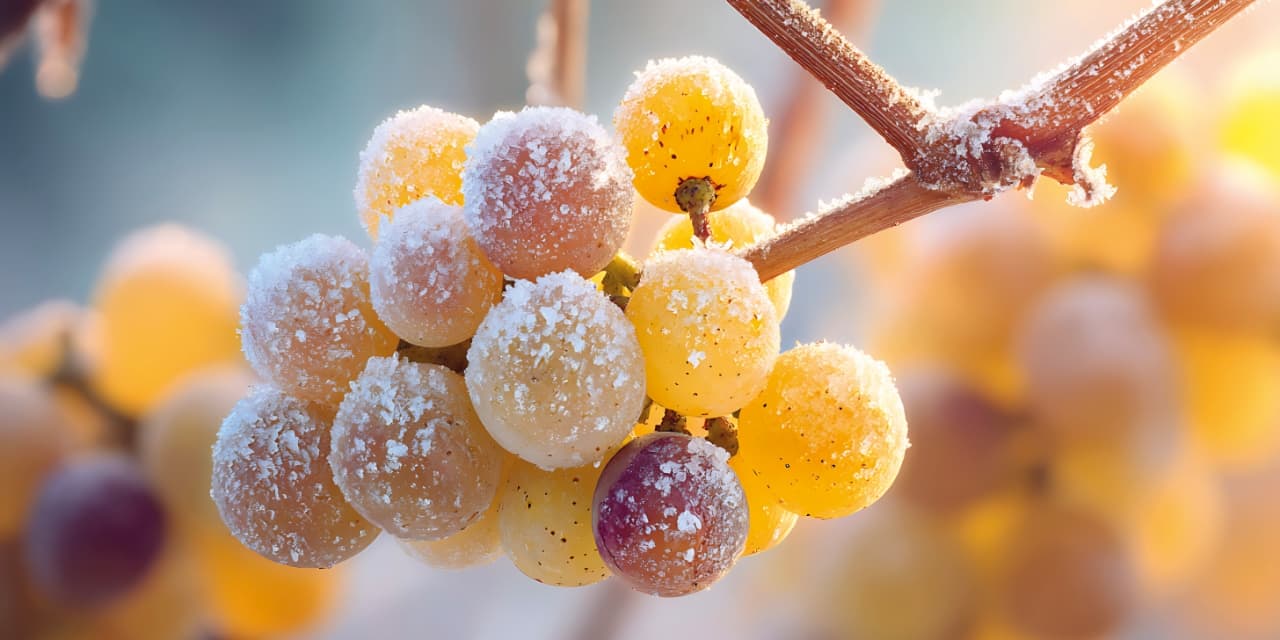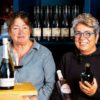Newcastle Wine School owner David Harker explores the world of sweet wines
Short, dark days and bitter cold nights are not the perfect conditions for harvesting grapes – unless you are making ice wine.
Ice wine is one of the great wonders of the wine world. Healthy grapes are left on the vine deep into the winter months. Then, after several days of subzero temperatures when the water in the grape pulp is frozen solid, the grapes are picked. Harvested by hand in the dead of night when temperatures are at their lowest, the grapes are then immediately pressed. The ice remains in the press while the highly concentrated juice is fermented to make a sweet wine with bright, varietal fruit flavours balanced by refreshing acidity.
Traditionally popular in Germany and Austria, ice wine can only be produced in regions where winter temperatures are severe enough to freeze the grapes. While that’s not something that can be guaranteed in Europe, freezing temperatures are much more reliable in the US state of New York and in Canada – the world’s largest producer of ice wine.
Ice wine can be produced in some rather unexpected places if the winter is exceptionally cold. High in the mountains of Manchuela, if temperatures have remained below -5°C for at least five days, Rosalina Molina hand harvests frozen Petit Manseng grapes to make a Spanish ice wine. The wine was first created in what turned out to be a happy accident after a number of vines were overlooked during the harvest. When Rosalina discovered the vines – with the grapes frozen solid – she decided to make the best of the situation.
If harvesting frozen grapes to make sweet wine sounds like madness then selecting shrivelled, rot-infected grapes is equally ludicrous. In Sauternes, the Garonne and Ciron rivers flow through gently rolling French hills to create the ideal environment for noble rot. This benign fungus develops on grapes on damp misty mornings, but its development is slowed by the warm sunny afternoons. The fungus punctures the grape skin causing water to evaporate from the grape. This concentrates the sugars and acids in the pulp, creating complex flavours of honey, marmalade, dried apricot, ginger and cinnamon spice. To harvest the grapes, it is necessary to return to the vines several times, each time selecting grapes that have reached the perfect stage of rotten development.
The sweet wines of Sauternes are no longer fashionable, but they are still highly prized. The record for the most expensive white wine ever sold at auction is a Sauternes – Château d’Yquem 1811 – sold for $117,000 in 2011.
Sauternes is also the inspiration for one of Australia’s most awarded wines. Darren De Bortoli created Noble One from Semillon grapes affected by noble rot in the humid Riverina region of New South Wales. Despite initial family scepticism, more than 40 years later the wine is an established favourite.
Sauternes is an obvious choice for dessert, although in France it is often served as an aperitif or as a starter with foie gras. The sweetness of the wine also works well with a salty blue cheese such as Roquefort. My favourite pairing is with Chinese food – anything with sweet and sour flavours to umami-rich Peking duck.
The foggy river valleys of north-eastern Hungary have more than 500 years of sweet wine making history. The wine, Tokaji Aszú, is so central to Hungarian culture that it gets a mention in the national anthem.
Historically the Aszú, noble rot-affected grapes, were collected in large baskets called puttony. The wines were produced and labeled based on how many baskets of Aszú grapes were added to regular grape must. The term survives for wines described as 3-6 puttonyos. The 6 puttonyos wines are the sweetest, with at least 150g per litre of residual sugar – the equivalent of five teaspoons of sugar per glass!
Alsace – in the rain shadow of the Vosges mountains of eastern France – enjoys long, warm and dry autumns, ideal conditions for late-harvest sweet wines. These wines are made from overripe grapes that have been allowed to dry on the vine. These vendage tardive wines – with their rich, concentrated flavours of lychee and honey – are a perfect match with the local Munster cheese.
The process of producing sweet wines is risky, labour-intensive, and yields very little wine. Consequently, the wines are expensive, but treat yourself to a bottle and spare a thought for the poor grape pickers toiling in the snow or carefully selecting rotten grapes.
The Wine List
Vidal Icewine, Peller, Canada – VIN, Gateshead, £47
Award-winning ice wine from a top Canadian estate
Dulce Enero Ice Wine, Altolandon, Manchuela, Spain – Carruthers & Kent, Gosforth, £23.99
Only produced in exceptional years
Noble One Botrytis Semillon, De Bortoli, Australia – District, Whitley Bay, £23
An Australian icon
5 Puttonyos, Royal Tokaji, Hungary – Majestic, £30
A classic from one of the region’s top winemakers
Vendémiaire, Château Bouscassé, Pacherenc du Vic-Bilh, France – Cavavin, Newcastle, £23.99
Late-harvest Petit Manseng

David Harker’s journey in wine has seen him progress from complete novice to a Wine & Spirit Education Trust Diploma-certified wine educator, accredited Bordeaux and Sherry wine educator, Spanish Wine Scholar and – in a We Bought a Zoo moment – wine school owner. To explore Newcastle Wine School’s events, tastings and courses visit www.localwineschool.com/newcastle











